
The Luck of Barry Lyndon is a picaresque novel by English author William Makepeace Thackeray, first published as a serial in Fraser's Magazine in 1844, about a member of the Irish gentry trying to become a member of the English aristocracy. Thackeray, who based the novel on the life and exploits of the Anglo-Irish rake and fortune-hunter Andrew Robinson Stoney, later reissued it under the title The Memoirs of Barry Lyndon, Esq. The novel is narrated by Lyndon himself, who functions as a quintessentially unreliable narrator.

John Roderigo Dos Passos was an American novelist, most notable for his U.S.A. trilogy.
Marge Piercy is an American progressive activist, feminist, and writer. Her work includes Woman on the Edge of Time; He, She and It, which won the 1993 Arthur C. Clarke Award; and Gone to Soldiers, a New York Times Best Seller and a sweeping historical novel set during World War II. Piercy's work is rooted in her Jewish heritage, Marxist social and political activism, and feminist ideals.

A diorama is a replica of a scene, typically a three-dimensional model either full-sized or miniature. Sometimes it is enclosed in a glass showcase for a museum. Dioramas are often built by hobbyists as part of related hobbies such as military vehicle modeling, miniature figure modeling, or aircraft modeling.
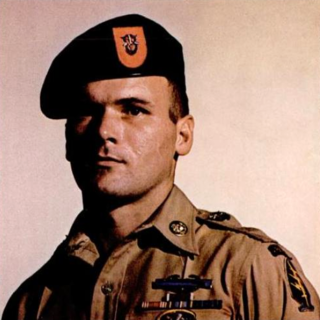
Barry Allen Sadler was an American soldier, singer-songwriter and author. Sadler served as a Green Beret medic, achieving the rank of Staff Sergeant. He served in the Vietnam War from late December 1964 to late May 1965. Most of his work has a military theme, and he is best known for his patriotic "Ballad of the Green Berets," a #1 hit in 1966. He died at age 49 after being shot in the head in Guatemala City.
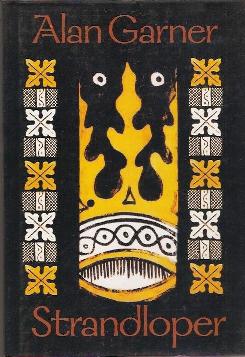
Strandloper is a novel by English writer Alan Garner, published in 1996. It is loosely based on the story of a Cheshire labourer, William Buckley. The historical figures of Edward Stanley and John Batman also appear as characters. An English epileptic is transported to Australia, where he escapes and becomes the holy man of the Beingalite people. Many years later he returns to England, and walks his home landscapes like an Aboriginal. Reaching the village church, he smears his body with clay and performs a spirit dance.

And Quiet Flows the Don is a novel in four volumes by Russian writer Mikhail Sholokhov. The first three volumes were written from 1925 to 1932 and published in the Soviet magazine Oktyabr in 1928–1932, and the fourth volume was finished in 1940.
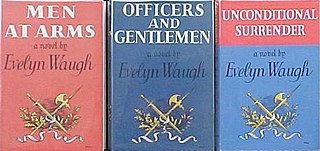
The Sword of Honour is a trilogy of novels by Evelyn Waugh which loosely parallel Waugh's experiences during the Second World War. Published by Chapman & Hall from 1952 to 1961, the novels are: Men at Arms (1952); Officers and Gentlemen (1955); and Unconditional Surrender (1961), marketed as The End of the Battle in the United States and Canada.

The Talisman is a 1984 fantasy novel by American writers Stephen King and Peter Straub. The plot is not related to that of Walter Scott's 1825 novel of the same name, although there is one oblique reference to "a Sir Walter Scott novel." The Talisman was nominated for the Locus and World Fantasy Awards in 1985. King and Straub followed up with a sequel, Black House (2001), that picks up with a now-adult Jack as a retired Los Angeles homicide detective trying to solve a series of murders in the small town of French Landing, Wisconsin.
Eric Robert Russell Linklater CBE was a Welsh-born Scottish poet, fiction writer, military historian, and travel writer. For The Wind on the Moon, a children's fantasy novel, he won the 1944 Carnegie Medal from the Library Association for the year's best children's book by a British subject.

My Michael is a 1968 novel by the Israeli author Amos Oz. The story, told in first-person by a dissatisfied wife, describes her deteriorating marriage to a geology student and her escape into a private fantasy world of violent heroics and sexual encounters. Set in Jerusalem of the 1950s, the novel uses the physical and political landscape of the city as a metaphor for the protagonist's inner struggle. The novel garnered much controversy upon its publication in Israel, and was also the best-selling novel in Israel in the 1968–1969 season. The novel was translated into English in 1972 and has since been translated into more than 30 languages. It was adapted into a Hebrew-language film in 1976.
Melvin Barry Hines, FRSL was an English author, playwright and screenwriter. His novels and screenplays explore the political and economic struggles of working-class Northern England, particularly in his native West Riding/South Yorkshire.

The Willow pattern is a distinctive and elaborate chinoiserie pattern used on ceramic tableware. It became popular at the end of the 18th century in England when, in its standard form, it was developed by English ceramic artists combining and adapting motifs inspired by fashionable hand-painted blue-and-white wares imported from Qing dynasty China. Its creation occurred at a time when mass-production of decorative tableware, at Stoke-on-Trent and elsewhere, was already making use of engraved and printed glaze transfers, rather than hand-painting, for the application of ornament to standardized vessels.
Record World magazine was one of the three main music industry trade magazines in the United States, along with Billboard and Cashbox. It was founded in 1946 under the name Music Vendor, but in 1964 it was changed to Record World, under the ownership of Sid Parnes and Bob Austin. It ceased publication on April 10, 1982. Many music industry personalities, writers, and critics began their careers there in the early 1970s to 1980s.
Barry England was an English novelist and playwright. He is chiefly known for his 1968 thriller Figures in a Landscape, which was nominated for the inaugural Booker Prize.

Figures in a Landscape is a 1970 British film directed by Joseph Losey and written by star Robert Shaw, based on the 1968 novel of the same name by Barry England.

Dark of the Sun is a 1968 British adventure war film starring Rod Taylor, Yvette Mimieux, Jim Brown, and Peter Carsten. The film, which was directed by Jack Cardiff, is based on Wilbur Smith's 1965 novel, The Dark of the Sun. The story about a band of mercenaries sent on a dangerous mission during the Congo Crisis was adapted into a screenplay by Ranald MacDougall. Critics condemned the film on its original release for its graphic scenes of violence and torture.
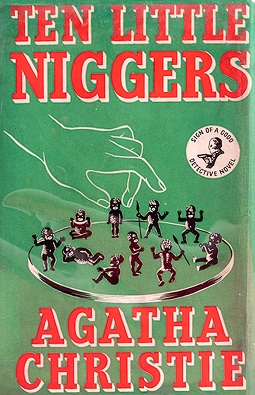
And Then There Were None is a mystery novel by the English writer Agatha Christie, who described it as the most difficult of her books to write. It was first published in the United Kingdom by the Collins Crime Club on 6 November 1939, as Ten Little Niggers, after an 1869 minstrel song that serves as a major plot element. The US edition was released in January 1940 with the title And Then There Were None, taken from the last five words of the song. Successive American reprints and adaptations use that title, though American Pocket Books paperbacks used the title Ten Little Indians between 1964 and 1986. UK editions continued to use the original title until 1985.
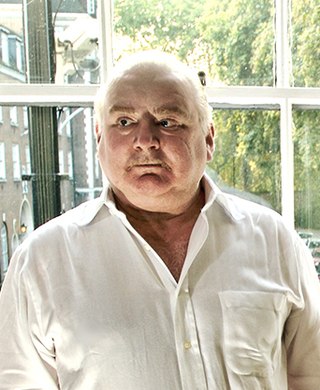
Peter Ackroyd is an English biographer, novelist and critic with a specialist interest in the history and culture of London. For his novels about English history and culture and his biographies of, among others, William Blake, Charles Dickens, T. S. Eliot, Charlie Chaplin and Sir Thomas More, he won the Somerset Maugham Award and two Whitbread Awards. He is noted for the volume of work he has produced, the range of styles therein, his skill at assuming different voices, and the depth of his research.

The Flight of the Heron is a historical novel by British author D. K. Broster, first published in 1925. Set in Scotland during the Jacobite rising of 1745, it follows the developing friendship between two men on opposite sides of the rising: Ewen Cameron, a Highland chieftain and Jacobite, and Keith Windham, an Englishman and an officer in the Government army.















